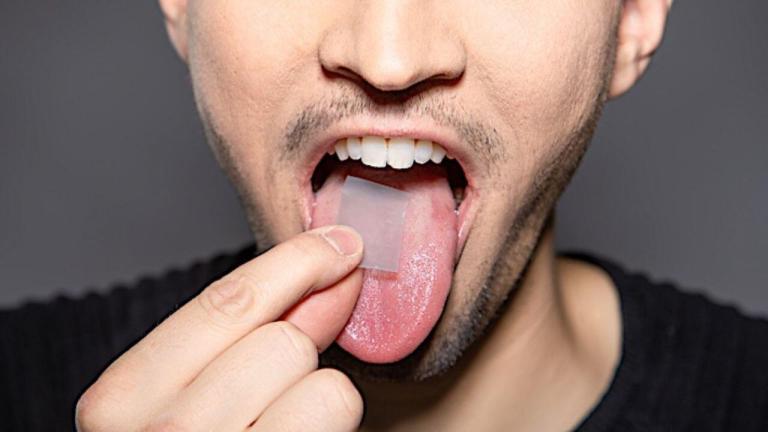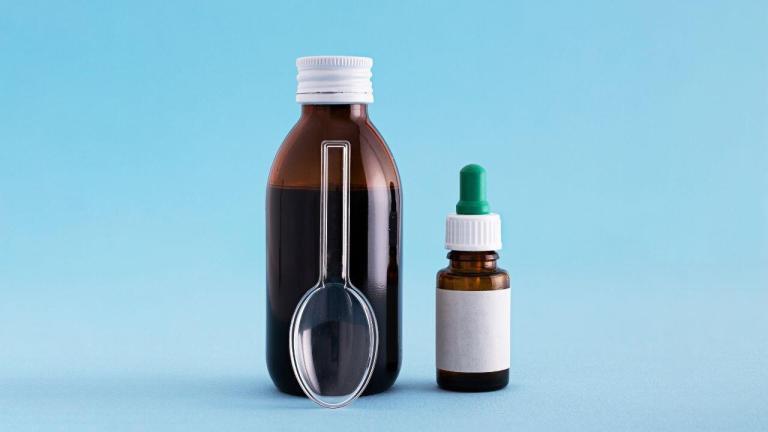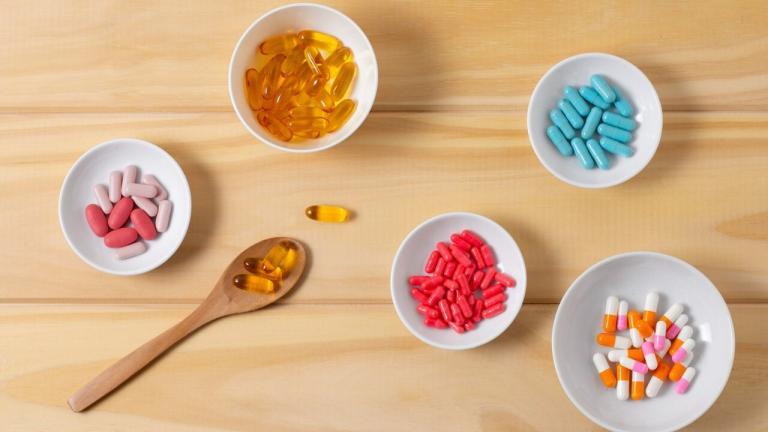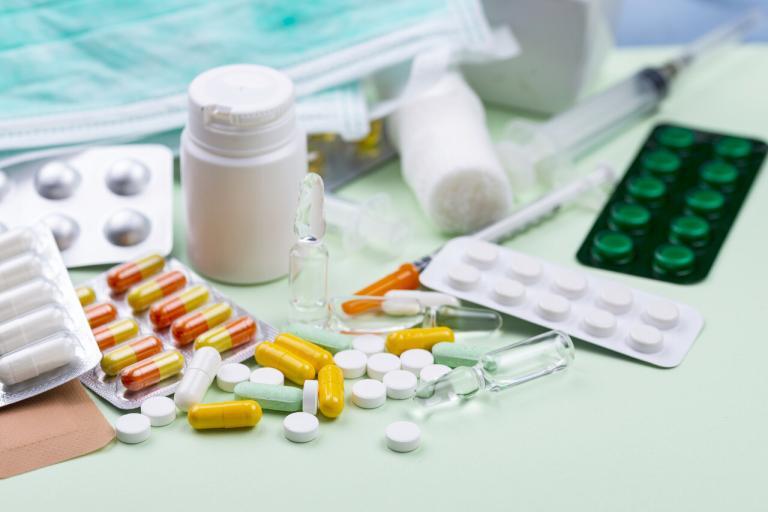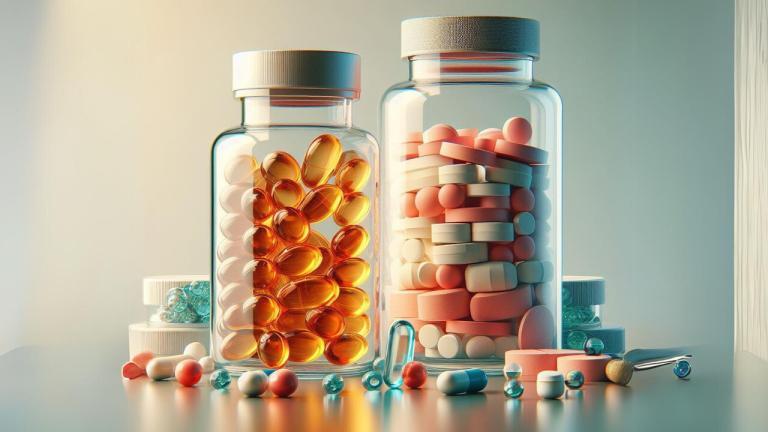
Oral solid dosage (OSD) forms stand out as a cornerstone in drug delivery systems among various dosage forms. These forms are important not only in facilitating the ease of administration but also in ensuring patient compliance, enhancing bioavailability, and tailoring release profiles to meet therapeutic needs.
This article will explore into the diverse types of OSD forms, including tablets, capsules, buccal and sublingual tablets, and chewable tablets, highlighting their characteristics, benefits, and specific applications in medical treatments.
Meaning of Oral Solids Dosage Forms
Oral solid dosage forms are a category of pharmaceutical formulations designed for oral administration in solid form. This group encompasses tablets, capsules, chewable tablets, and buccal or sublingual tablets, each tailored to deliver active pharmaceutical ingredients (APIs) into the body through the digestive tract.
OSDs are favored for their convenience, stability, ease of manufacturing, and precise dosing capabilities. They are engineered to meet diverse therapeutic needs, offering various release mechanisms including immediate, sustained, and controlled release.
This versatility ensures that medications are released at the right time, rate, and location in the body to optimize therapeutic outcomes.
OSDs are particularly beneficial for their patient-friendly nature, promoting adherence to treatment regimens among individuals who may have difficulty with liquid or injectable forms. The development of OSDs is a critical area in pharmaceutical sciences, aiming to enhance drug efficacy, patient compliance, and overall treatment success.
Here’s a brief overview of the OSD forms:
- Tablets (Mono and Bi-layer): These are designed for both immediate and modified release delivery systems. Bi-layer tablets can combine two Active Pharmaceutical Ingredients (APIs) or offer two different release profiles in a single tablet, enhancing therapy options.
- Fixed-Dose Combinations (FDCs): By combining multiple APIs into a single dosage form, FDCs aim to simplify medication regimens, potentially improving patient adherence to treatment plans.
- Micro and Mini Tablets: Tailored for pediatric and geriatric patients, these smaller-sized tablets facilitate easier dosing and more precise drug delivery.
- Aqueous Film Coated Tablets: The coating process enhances tablet swallowability and appearance while protecting the API, thus ensuring the stability and efficacy of the medication.
- Capsules: A conventional dosage form that can be tailored for immediate or modified release of the medication.
- Beads (Including Multi-particulate Fluid Bead Coating): This technology ensures a uniform coating over multiparticulate systems, leading to consistent release profiles and dose uniformity, crucial for complex formulations.
- Granules for Reconstitution and Powders (Including Powder-in-Bottle (PiB)): These forms are versatile, allowing for various release profiles. They can be designed for reconstitution into a liquid form or direct consumption, providing flexibility in administration methods.
- Stick Packs: Designed for convenience and portability, stick packs offer an easy-to-use option for medication that is precise in dosing, making them ideal for on-the-go consumption.
Important Types of Oral Solids Dosage Forms
Oral solid dosage forms are a mainstay in pharmaceutical delivery, offering a diverse array of options for medication administration. These forms are designed to optimize drug delivery, patient compliance, and therapeutic efficacy and include:
Tablets
Tablets are a widely used oral solid dosage form in pharmaceuticals, designed for the convenient and effective delivery of active pharmaceutical ingredients to the body. They are small, solid discs or cylinders, typically manufactured by compressing a precise blend of APIs and excipients.
Excipients are non-active ingredients used to bind the compound, aid in the tablet’s stability, improve taste, and facilitate the controlled release of the medication.
The process of tablet manufacturing can vary but generally involves several key steps: blending, granulation, compression, and sometimes coating.
Granulation involves the addition of a liquid binder to the powder blend, forming granules that are subsequently dried, sieved, and compressed into tablets. This process enhances the uniformity and flowability of the mixture.
Direct Compression skips the granulation step, directly pressing the powder mixture into tablets. This method is cost-effective and reduces the risk of drug degradation due to heat or moisture.
Tablets are favoured for their ease of use, portability, stability, and precision in dosing. They can be designed to release the medication immediately upon ingestion or to release it slowly over a period of time (as in sustained-release or controlled-release formulations). This versatility makes tablets suitable for a wide range of therapeutic applications.
The design and formulation of tablets are critical, as they must ensure that the drug is released in a predictable and controlled manner, is stable under various conditions, and is acceptable to patients in terms of size, shape, and taste.
The development of tablets as a dosage form represents a significant aspect of pharmaceutical science, combining the art and science of excipient selection, formulation design, and manufacturing processes to meet specific therapeutic needs.
Tablets are further categorized based on their release mechanisms:
- Immediate-Release Tablets: Designed for rapid disintegration and absorption, facilitating quick onset of action.
- Sustained-Release Tablets: These tablets gradually release the API, maintaining a constant drug concentration in the bloodstream over an extended period.
- Controlled-Release Tablets: Engineered to release the API at a predetermined rate, targeting specific absorption sites in the gastrointestinal tract.
Buccal and Sublingual Tablets
Buccal and sublingual tablets are specialized oral solid dosage forms designed for rapid drug absorption through the mucous membranes of the mouth, offering an alternative route of administration to the conventional oral pathway.
These formulations are particularly useful for delivering medications that require quick onset of action or for drugs that are poorly absorbed through the gastrointestinal tract or extensively metabolized by the liver.
Buccal Tablets:
Buccal tablets are placed between the gum and the inner cheek. The drug is absorbed through the buccal mucosa, providing a direct entry into the systemic circulation. This method bypasses the first-pass metabolism in the liver, potentially increasing the bioavailability of certain medications.
Buccal tablets are designed to dissolve slowly, ensuring prolonged drug release and absorption. They are often used for drugs that need to be administered over an extended period.
Sublingual Tablets:
Sublingual tablets are placed under the tongue and designed to dissolve rapidly, facilitating immediate absorption of the drug into the bloodstream through the rich vascular supply of the sublingual area.
This route also avoids first-pass metabolism, making it suitable for drugs that require rapid onset of action, such as nitroglycerin for angina relief.
Buccal and sublingual tablets are used in various therapeutic areas, including cardiovascular diseases for rapid relief of angina, pain management, and in the treatment of conditions requiring rapid onset of action or where the oral route is compromised.
Chewable Tablets
Chewable tablets are a form of oral solid dosage designed to be chewed and broken down in the mouth before swallowing. This form of medication delivery is especially beneficial for individuals who have difficulty swallowing whole tablets or capsules, such as children, the elderly, or those with dysphagia (difficulty swallowing).
Chewable tablets are formulated with flavorings and sweeteners to make them palatable, improving patient compliance and acceptance, particularly among pediatric patients.
The development of chewable tablets involves careful formulation to ensure that the tablets are easy to chew, have a pleasant taste, and do not leave an unpleasant aftertaste.
Excipients used in chewable tablets must be non-toxic, compatible with active pharmaceutical ingredients (APIs), and capable of providing the desired mouthfeel and chewability. Commonly used excipients include flavoring agents, sweeteners, lubricants, and binders.
Chewable tablets are widely used in pediatrics, but their convenience and ease of use also make them suitable for adults who prefer not to swallow pills. They are utilized for a range of medications, including vitamins, antacids, and allergy medications, among others.
Key Characteristics and Benefits of Chewable Tablets:
- Ease of Administration: Chewable tablets do not require water to swallow, making them convenient for on-the-go administration or for use in situations where water is not readily available.
- Improved Palatability: The addition of flavors and sweeteners enhances the taste, which is particularly important for pediatric medications or drugs with naturally bitter tastes.
- Immediate Release: The act of chewing initiates the breakdown of the tablet, allowing for quicker disintegration and absorption of the medication in the gastrointestinal tract.
- Dosage Accuracy: Chewable tablets are formulated to deliver a precise dose of medication, reducing the risk of dosing errors associated with liquid formulations.
- Patient Compliance: The ease of use and improved taste profiles can significantly increase adherence to medication regimens, especially in populations prone to non-compliance.
Capsules
Capsules are a popular oral solid dosage form in the pharmaceutical industry, designed to deliver medication in a way that’s easy to swallow and can effectively mask the taste of the drug substance.
They consist of a shell and a filling, with the shell typically made from gelatin or a synthetic polymer that dissolves in the digestive tract. The filling contains the active pharmaceutical ingredient either alone or mixed with excipients to aid in the drug’s absorption, stability, and manufacturability.
The formulation of capsules involves careful consideration of the properties of the API, including its solubility and stability. The choice of excipients, capsule material, and manufacturing process must all be tailored to the specific requirements of the drug and the desired release profile.
In addition to traditional gelatin capsules, the development of non-animal-based capsules reflects ongoing innovation and the industry’s response to consumer preferences and regulatory changes. Regardless of the type, capsules remain a cornerstone of oral drug delivery, offering a combination of convenience, efficacy, and flexibility.
Types of Capsules:
- Hard Gelatin Capsules: These are the most common type, consisting of two parts that fit together to enclose the drug in powder or granule form. Hard capsules can be filled with a variety of materials, including powdered drugs, granules, or mini-tablets.
- Soft Gelatin Capsules (Softgels): Softgels are made from a more flexible, gelatin-based shell and are typically used to encase oils or liquid drugs that are not suitable for hard capsules. The gelatin shell of softgels can also contain plasticizers like glycerin or sorbitol to make them softer and more pliable.
- Vegetarian Capsules: These are similar to hard gelatin capsules but are made from plant-based materials like hypromellose (HPMC), making them suitable for vegetarians and individuals with dietary restrictions preventing the consumption of gelatin.
Capsules can be formulated for immediate release or modified to achieve sustained or controlled release, enhancing the therapeutic efficacy and patient experience.
How These Types of Oral Solids Dosage Forms Differ
Oral solid dosage forms, encompassing tablets, capsules, chewable tablets, and buccal/sublingual tablets, differ in their design, formulation, and administration route.
Each type is tailored to enhance drug delivery, improve patient compliance, and meet specific therapeutic needs, offering unique advantages in terms of ease of use, taste masking, and release mechanisms.
| Feature | Tablets | Capsules | Chewable Tablets | Buccal/Sublingual Tablets |
| Form | Compressed solid form | Shell containing medication | Designed to be chewed | Designed to dissolve in mouth |
| Composition | API with binders, fillers | Gelatin or polymer shell | API with flavorings, sweeteners | API, often with faster-dissolving excipients |
| Ease of Swallowing | Generally good, size-dependent | Easy, due to smooth capsule | Easy, due to chewing | Not swallowed; dissolves in mouth |
| Taste | Taste is masked if coated | No taste due to shell | Pleasant, flavored | Minimal to no taste |
| Release Mechanism | Can vary (immediate to controlled) | Immediate or modified release | Immediate release | Rapid absorption into bloodstream |
| Patient Compliance | High with coatings or small size | High, especially with soft capsules | Very high due to flavors | High for those with difficulty swallowing |
| Applications | Broad, versatile use | Broad, including liquids and semi-solids | Children, elderly, those with difficulty swallowing | Drugs needing rapid onset or bypassing the digestive system |
Advantages of Oral Solid Dosage Forms
Oral solid dosage forms including tablets, capsules, chewable tablets, and buccal or sublingual tablets, offer a multitude of advantages in pharmaceutical therapy.
One of the primary benefits is patient compliance; OSDs are easy to administer, allowing for self-medication without the need for professional assistance. They are also highly portable and discreet, enabling patients to maintain their medication schedules regardless of their location.
Furthermore, OSDs provide exceptional stability and a longer shelf life compared to liquid formulations, which are more susceptible to microbial contamination and require more stringent storage conditions. This stability translates into cost-effectiveness, as solid forms are less likely to degrade over time, ensuring the efficacy of the medication for longer periods.
Precision dosing is another significant advantage. OSDs are manufactured to contain an exact amount of the active pharmaceutical ingredient, ensuring that patients receive a consistent and accurate dosage with each administration. This precision is crucial for treatment efficacy and safety.
Additionally, the versatility of OSDs allows for the development of various release mechanisms, such as immediate, sustained, or controlled release, tailoring the drug’s absorption rate to the therapeutic needs of the patient. This customization can improve treatment outcomes and reduce side effects by maintaining optimal drug levels in the body.
Innovations and Future Directions
The pharmaceutical industry continues to innovate in the field of OSD forms, exploring new materials, technologies, and formulation techniques to overcome the limitations of traditional dosage forms.
Advances in nanotechnology, 3D printing, and material science are paving the way for more sophisticated drug delivery systems, offering improved bioavailability, targeted delivery, and personalized medicine.
Final Words
Oral solid dosage forms are integral to the pharmaceutical landscape, providing a versatile platform for drug delivery that caters to a wide range of therapeutic needs.
From the conventional tablets and capsules to the more specialized buccal, sublingual, and chewable tablets, each form offers unique advantages in terms of efficacy, patient compliance, and manufacturing efficiency.
As technology advances, the future of OSD forms holds promising potential for further enhancing drug therapy, making medications not only more effective but also more accessible and convenient for patients worldwide.
Understanding these various forms and their applications is essential for healthcare professionals, pharmacists, and patients alike, ensuring informed decisions in medication management and therapy optimization.


